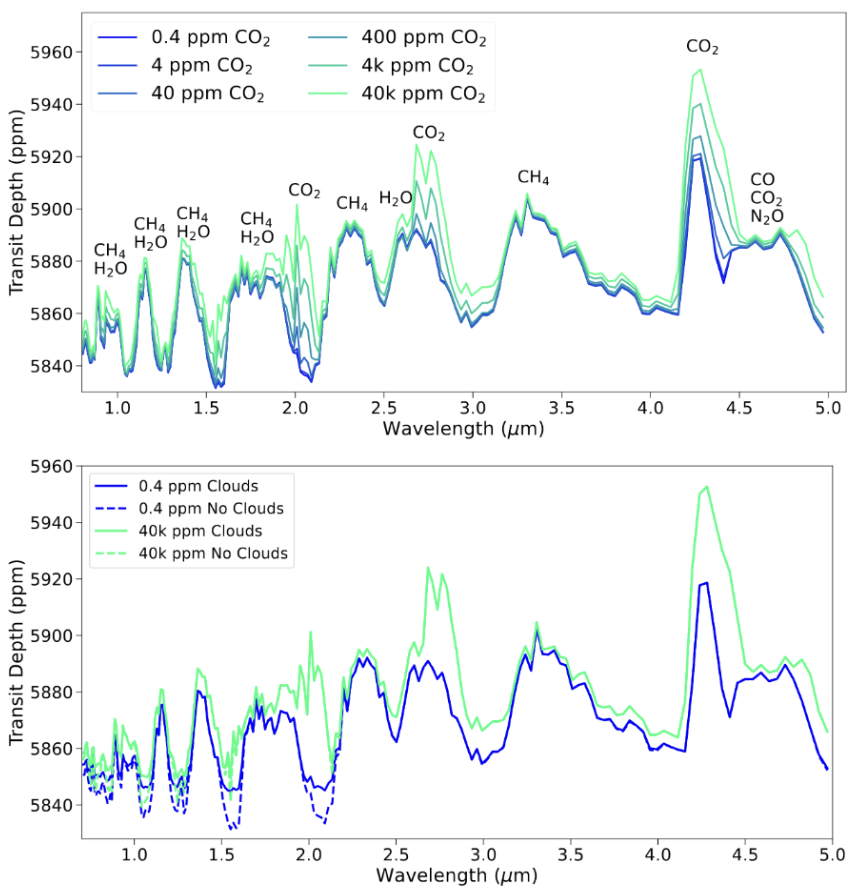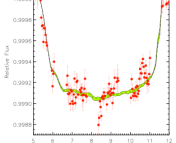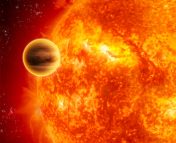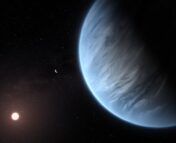Authors: Colby Ostberg, Stephen R. Kane, Andrew P. Lincowski, Paul A. Dalba
First Author’s Institution: Department of Earth and Planetary Sciences, University of California, Riverside, CA
Status: Accepted for publication to AJ [open access]
Do you spend your time staring up into the clouds? Well, perhaps you could be an astronomer! See, with the launch of the powerful space telescope JWST, astronomers who study extrasolar planets now have a previously unprecedented ability to probe into the clouds – well, the atmospheres – of planets that orbit stars other than our own. This is exciting for those who wish to better understand how planets (such as Earth) form and evolve, and how hostile those environments may or may not be for life as we know it.
Jumping back to our own neighborhood, recently planetary scientists have been more and more interested in Venus, Earth’s slightly toastier neighbor. This is because Venus could, in many ways, be Earth’s twin – it is very similar in size and mass to our planet, and is on the edge of the sun’s habitable zone; some have suggested it might have held liquid water in the past. However the conditions on the surface of Venus today could not be more different, as an incredibly dense atmosphere of over 95% carbon dioxide covers the planet, causing the pressure at the surface to be almost 100 times that of the Earth’s and hosting a greenhouse effect that leaves its surface hotter than Mercury’s.
Scientists are interested in how, despite how similar Venus must have been to Earth in the past, its atmosphere evolved to be so different – and outside of studying Venus directly, identifying Venus analogues outside our Solar System could help answer that question. This leaves one important question to solve – what would an exoVenus look like to our best telescopes and instruments? Could JWST be able to identify the difference between an exoEarth and an exoVenus?
Not So Different After All?
Initially, the question may seem silly – with our eyes we can look at pictures of Venus and Earth and clearly see how different they are. But since exoplanets are so far away, obtaining direct images of exoplanets is very difficult, as their light is completely obscured by their stars – and it’s basically impossible for small rocky planets in stellar habitable zones, like Venus and Earth. Instead, certain telescopes like JWST use spectroscopy to probe the molecular makeup of the starlight that passes through planetary atmospheres as they transit in front of their star, and thus identify the chemical composition of their atmospheres from the spectral features. So, in that case, what would the spectrum of an exoVenus look like, and how would it differ from an exoEarth?
To answer that question, the authors of today’s paper created computer models of atmospheres for a series of possible exoEarths or exoVenuses. Specifically, while the base atmospheric compositions resembled Earth’s and Venus’ respectively (including water-ice clouds on Earth, and sulfuric acid hazes on Venus), they allowed the proportion of CO2 in the atmospheres to vary from 0.00004% (0.4 parts per million) to 4% (40,000 ppm) on the exoEarths, and from 0.1% to 96% on the exoVenuses. The planets were assumed to be Earth-size and mass, orbiting at the boundary at which a runaway greenhouse effect would occur, around a red dwarf star modeled after TRAPPIST-1, as those are the most common types of stars in the galaxy and around which the most planets have been found.
With the planetary models in hand, the authors then simulated what the transmission spectrum of each planet’s atmosphere would look like to JWST’s NIRSpec instrument, testing to see which atmospheric features were visible and how many transits of the planet it would take for them to be confirmed detectable. Figures 1 and 2 show the simulated exoEarth and exoVenus transmission spectra respectively, both with and without clouds and hazes.


What Distinguishing Features!
While the simulated spectra look quite different at first glance, in reality it would take a large number of transits to obtain such a clear signal-to-noise ratio to identify the spectrum as a whole. Thus astronomers performing transmission spectroscopy usually look to identify specific strong molecular features that stand out above the rest of the spectrum, in order to identify them in a reasonable number of transits.
It turns out that, in the wavelength ranges where JWST operates, the strongest spectral features in the atmosphere(s) are the CO2 features, which both types of planets share. If the goal of a particular observation is to detect an atmosphere at all, the authors suggest that aiming to detect the CO2 bump at 4.3 μm is the best plan, as it can be detected in under 10 transits in all clear-sky models and remains detectable in cloudy/hazy models. If the goal is to distinguish between an exoEarth and an exoVenus, however, the question is a little more complicated.
The only exoVenus molecular line that cannot also be found in the exoEarth spectra is the SO2 line at 4 μm. However, the line is small enough that it would require at least 47 transits to confirm in a clear atmosphere, and becomes completely undetectable in a hazy one (refer to Figure 2). Therefore, the authors suggest the best way to distinguish the two kinds of planets is to find a feature unique to exoEarths – in this case, they suggest the CH4 features (refer to Figure 1). While the lower-wavelength CH4 features overlap with H2O lines, the features at 2.3 and 3.5 μm are detectable in under 10 transits, and do not overlap nearly as much with the CO2 features in a possible exoVenus atmosphere as the lines at smaller wavelengths would (see Figure 3).

In conclusion, while directly detecting an exoVenus atmosphere can be a challenge, identifying an atmosphere like Earth’s around a red dwarf is a lot easier for JWST; significant identifying features can potentially be distinguished even within the bounds of a “small” JWST proposal, and so it is likely that our understanding of the atmosphere, evolution, and habitability of planets like our own around other stars will greatly evolve as JWST continues its operation.
Astrobite edited by: Isabella Trierweiler
Featured image credit: NASA




